I have been in the investment business since the late 1990’s, and it seems that investors used to ask me about municipal bonds much more in the past than they do now. Today’s low interest rates today are probably a big reason why: tax-free income always sounds attractive, but 6% taxable beats 2% tax-free every time. (And 6% partially taxable – such as from real estate – can look even better.)
This month, we’ll take a close look at municipal (or “muni”) bonds and what they can offer us.
What Will Short Term Muni Bonds Pay Me Today?
For this article, I will pick a couple of example bonds from Fidelity.com. I’ll stick to non-AMT (some muni bonds could be taxable if you’re not careful), insured bonds with issuers rated A and above, and insurers that are rated AA or higher.
First, I looked for a short-term bond: a place to park some money for a year or so. I selected Hueneme Cal. Elementary School District General Obligation Bonds, Due 8/01/2018. These bonds were originally paying 4% when issued, so we’ll need to pay a premium to purchase them. The price listed is $103.74, which means that a $1,000 bond will cost $1,037.40.1 This bond will make interest payments on February 1 and August 1 every year. We have missed the February payment this year, so we’ll receive $20 per bond, ($1,000 x 4% ÷ 2 = $20), on 8/1/17, 2/1/18 and 8/1/18. On August 8 next year, we’ll also receive the principal of the bond; $1,000.
So, an investor buying the above bond today would pay $1,037.40 to receive $1,060.00 – or $22.60 of profit – back over the next 14 months. An online yield calculator2 tells us that’s a yield to maturity of 1.0%. Thus, a $1 million investment would give cash flows that total $57,840: but then you’ll absorb a $36,000 loss when the bonds are redeemed for $964,000 next year. The $36,000 would be considered a capital loss that can be used to offset capital gains on your tax returns – so you could save about $9,000 additional in taxes – depending on your state tax bracket.3 This income and the tax deductions would be benefits that are completely tax free, but I can think of better ways to invest $1 million; In rental properties, for example, where the bulk of our (much higher) cash flow could be sheltered by the depreciation deduction.
As shown in the above example, bond prices will rise when interest rates drop. (Investors are willing to pay more for your bond that pays 4% if they can only get 1% from new bonds today.) Rising interest rates will have the opposite effect on bonds – they will make your bond value drop.
An investor willing to buy a municipal bond with a maturity 10 years from now could expect to earn a Yield to Maturity of between 2.5% and 3.2% if you’re focusing on good quality bonds. That may be tempting for the higher yield, but a close look at the numbers reveals some principal risk.
Let’s look at a bond issued by the Chula Vista, California elementary school district. This bond has a maturity date of 09/1/2027 and pays a 3.25% coupon semiannually.4 As such, it is priced at a premium of $104.316 ($1,043.16 per bond that will pay $1,000 upon redemption) and has a yield to maturity of 2.767%. Our investment can be threatened in three ways:
- Interest rates rise, and we are stuck with a 2.767% YTM when we can find higher rates in the bond market.
- We decide to sell our bonds, but must sell at a loss to compete with the current investment environment.
- Inflation rises; devaluing our semi-annual income payment as well as our future principal payment.
This article could have been a detailed discussion of muni bonds and how they work, but I opted for a “10,000 foot,” or broad, view instead. My last example (Chula Vista) represents $3,250 of annual cash flow for $104,316 invested – with no chance of increasing income or growth of my principal. I think there are more attractive options in the market today. If you have any questions, please call me at (877) 313-1868. This does not constitute an offer to buy or sell any security. Investments in securities are not suitable for all investors. Investment in any security may involve a high degree of risk and investors should review all “Risk Factors” before investing. Investors should perform their own due diligence before considering any investment. Past performance and/or forward looking statements are never an assurance of future results. Securities offered through Sandlapper Securities, LLC. Headquarters: 800 E. North Street, 2nd Floor, Greenville, SC 29601. Member FINRA/SIPC. Specialized Wealth Management is not affiliated with Sandlapper Securities, LLC. California Insurance License 0I80282. Copyright 2016 Specialized Wealth Management. All rights reserved.
Quote obtained from Fidelity.com on April 25, 2017.

